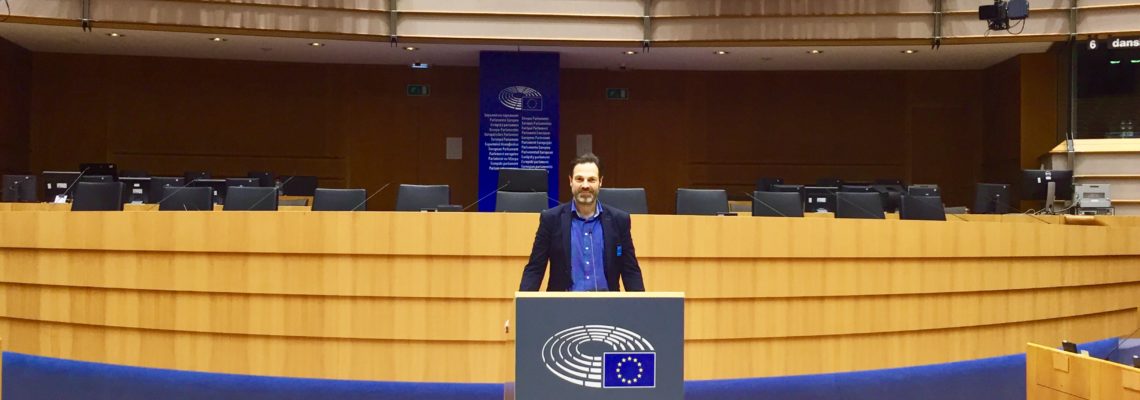

Lastly, I was given a unique opportunity to visit the European Parliament in Brussels. It was a special experience to be at the political heart of our part of the world. I only knew the European Parliament from the media and now all of a sudden I was right there.
Below you can see me in the biggest meeting room. I of course immediately used the opportunity to give the entire room a good motivating speech. After all, I was there.
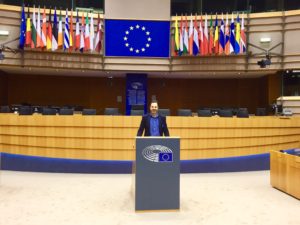
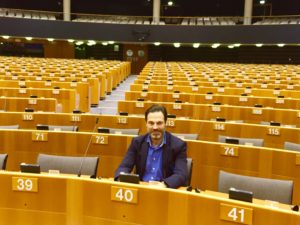
In another meeting room I briefly sat in the President’s seat. Another one of those opportunities that you can’t let pass.
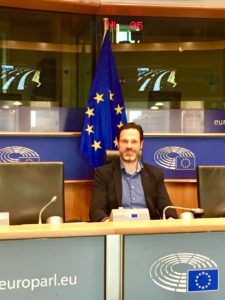
What sort of tasks and powers does the European Parliament actually have?
Together with the Council of the European Union it forms the EU’s legislative authority. The Parliament can adopt, amend or reject European legislation (directives, orders and rulings). The coming into force of the Treaty of Lisbon led to a rapid expansion of decision-making powers. Parliament must approve most binding European legislation via the usual legislative procedure.
But unlike most elected parliaments, the European Parliament has no right of initiative on the drafting of laws. Within the EU, this is the exclusive right of the European Commission. The Commission shares this right with the Council of Ministers only in the Common Foreign and Security Policy. Parliament can adopt non-binding resolutions. These encourage the European Commission to submit a specific bill.
Tasks and powers
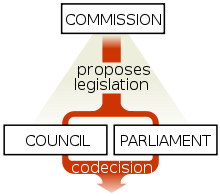
At various points in this enormous building, the history of the European Parliament becomes visible. Below you can see me in the photo gallery with the Presidents of the European Parliament. The first photo on the bottom row is of the Dutchman Piet Dankert. He was the President from January 1982 to July 1984.
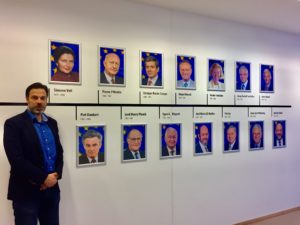
There is a lot of room for art in the European Parliament. Art from all the member states is to be found scattered around the building. The work of art in the photo below is the biggest in the European Parliament. It takes up a large part of the open space of the stairwell and symbolises the unity of all the member states.
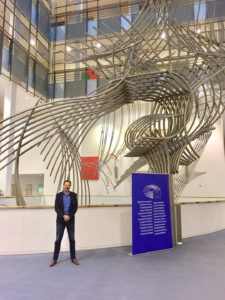
I also came across a prominent work of art in the hall on the ground floor. In fact, there you imagine yourself in a nice shopping street. As well as works of art and real plants you will find, among other things, ATMs of various banks, a hairdresser and a card shop.
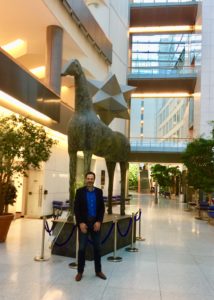
It would be a good thing if more people just found out more about the European Union and the European Parliament in particular. What has it done for us all in recent decades and what more can it do for us in the future? I have great respect for the politicians who commit to taking decisions in a democratic way. Cooperation, awareness of different cultures, treating differences with respect and tactful communication are keywords here. In any event, hopefully nobody lets an opportunity to vote slip by. The direct elections for the European Parliament will be held next spring. Often it’s about big issues but the representatives also sit here for you and me. So I hope for a good result. Just the fact that we in the European Union can live in freedom should be an enormous incentive.
So vote in May 2019 out of respect for yourself and others!